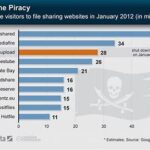Title: The Digital Piracy Dilemma: Understanding, Impacts, and Solutions in the United States
Abstract:
Digital piracy has emerged as a pervasive and complex issue in the United States, challenging traditional notions of intellectual property rights, copyright enforcement, and digital consumption. With the widespread availability of high-speed internet and digital technologies, pirated content such as movies, music, software, and e-books can be easily accessed and distributed online, leading to significant economic losses for content creators and copyright holders.

This essay provides a comprehensive analysis of digital piracy in the United States, examining its historical roots, technological drivers, societal impacts, and policy responses. Drawing on empirical research, industry reports, and legal frameworks, it explores the motivations behind digital piracy, its economic consequences, and the effectiveness of legal and technological measures in combating this pervasive form of online infringement.
Introduction:
Digital piracy, the unauthorized distribution or reproduction of copyrighted
digital content, has emerged as a widespread and persistent challenge in the
United States, fueled by technological advancements, changing consumer
behaviors, and evolving legal and regulatory frameworks.
From illegal file-sharing websites to peer-to-peer networks and streaming platforms, pirated content can be easily accessed and disseminated online, posing significant challenges for content creators, copyright holders, and policymakers. This essay aims to provide a comprehensive examination of digital piracy in the United States, exploring its historical context, technological drivers, societal impacts, and policy responses. By analyzing the motivations behind digital piracy, its economic consequences, and the effectiveness of legal and technological measures in combating online infringement, it seeks to shed light on this complex and multifaceted phenomenon.

Historical Roots of Digital Piracy:
The roots of digital piracy can be traced back to the emergence of digital technologies and the internet in the late 20th century, which facilitated the rapid reproduction and distribution of copyrighted content in digital formats. Some key historical developments in the evolution of digital piracy include:
Napster and Peer-to-Peer Networks:
The rise of Napster in the late 1990s marked a watershed moment in the history of digital piracy, enabling users to share and download music files over the internet using peer-to-peer (P2P) technology. Napster’s decentralized architecture and user-friendly interface made it a popular platform for music piracy, leading to legal challenges from the music industry and eventually the shutdown of the service in 2001.
BitTorrent and Online Streaming:
The development of BitTorrent technology in the early 2000s revolutionized the distribution of pirated content, allowing users to download large files quickly and efficiently from multiple sources. BitTorrent trackers and indexing sites became hubs for the sharing of movies, TV shows, software, and other copyrighted materials, while online streaming platforms offered convenient access to pirated content without the need for downloading.
Digital Rights Management (DRM):
In response to the proliferation of digital piracy, content creators and copyright holders implemented digital rights management (DRM) technologies to protect their intellectual property and control access to digital content. DRM systems use encryption, copy protection, and access controls to prevent unauthorized copying, distribution, and use of copyrighted materials, but they have also been criticized for restricting consumer rights and impeding interoperability.

Technological Drivers of Digital Piracy:
Digital piracy is driven by a combination of technological factors, economic incentives, and social dynamics that shape the production, distribution, and consumption of digital content. Some key technological drivers of digital piracy include:
High-Speed Internet and Broadband Access:
The widespread availability of high-speed internet and broadband access has facilitated the rapid transmission and distribution of large digital files, making it easier for users to download and share pirated content online. Broadband infrastructure and network technologies such as fiber-optic cables and 5G wireless networks have further accelerated the growth of digital piracy by reducing latency and increasing bandwidth capacity.
Digital Storage and Cloud Computing:
Advances in digital storage and cloud computing technologies have made it possible to store and access vast libraries of pirated content online, allowing users to stream movies, music, and TV shows from remote servers without the need for local storage or physical media. Cloud-based storage services and file-hosting platforms provide convenient and scalable solutions for hosting and sharing pirated files, while encryption and obfuscation techniques help conceal the identities of users and protect against enforcement efforts.
Decentralized and Anonymous Networks:
Peer-to-peer (P2P) networks, decentralized protocols, and anonymous communication tools enable users to share and distribute pirated content without centralized control or oversight, making it difficult for copyright holders and law enforcement agencies to identify and target infringing activities. Technologies such as Tor, VPNs, and proxy servers provide anonymity and privacy protections for users engaged in digital piracy, shielding their IP addresses and online activities from surveillance and monitoring.

Societal Impacts of Digital Piracy:
Digital piracy has wide-ranging societal impacts that extend beyond the economic losses suffered by content creators and copyright holders, affecting consumers, industries, and cultural norms. Some key societal impacts of digital piracy include:
Economic Losses and Market Distortion:
Digital piracy results in significant economic losses for content creators, copyright holders, and legitimate businesses, depriving them of revenue, undermining market incentives, and distorting pricing mechanisms. Pirated content competes directly with legitimate products and services, driving down prices, reducing market demand, and eroding the profitability of creative industries.
Job Displacement and Industry Decline:
The proliferation of digital piracy threatens jobs and livelihoods in creative industries such as music, film, publishing, and software development, where revenues are heavily dependent on intellectual property rights and copyright protection. Job displacement, wage stagnation, and industry decline can have ripple effects throughout the economy, leading to reduced investment, innovation, and cultural diversity.
Consumer Behavior and Attitudes:
Digital piracy influences consumer behavior and attitudes towards intellectual property, copyright enforcement, and digital consumption practices. Widespread availability of pirated content may foster a culture of entitlement and impunity among users, leading to normalization of copyright infringement and devaluation of creative works. Perceptions of digital piracy as a victimless crime or a form of civil disobedience can undermine efforts to combat online infringement and promote legal alternatives.
Innovation and Creativity:
Digital piracy may have complex effects on innovation and creativity in creative industries, where piracy can serve as a form of distribution, promotion, and feedback mechanism for emerging artists and independent creators. While piracy may provide exposure and visibility for some artists, it can also deter investment, reduce incentives for innovation, and stifle creativity by undermining intellectual property rights and copyright protection.

Policy Responses to Digital Piracy:
Addressing digital piracy requires a multi-faceted approach that combines legal, technological, and regulatory measures to deter infringement, protect intellectual property rights, and promote legal alternatives for digital content consumption. Some key policy responses to digital piracy include:
Copyright Enforcement and Anti-Piracy Measures:
Strengthening copyright enforcement mechanisms and anti-piracy measures to combat online infringement, deter illegal file-sharing, and disrupt pirate networks. Copyright holders and law enforcement agencies may use takedown notices, site-blocking injunctions, and digital fingerprinting technologies to identify and remove infringing content from online platforms and services.
Digital Rights Management (DRM) Technologies:
Implementing digital rights management (DRM) technologies and encryption techniques to protect intellectual property and control access to digital content. DRM systems can help prevent unauthorized copying, distribution, and use of copyrighted materials by restricting access to protected content and enforcing licensing terms and conditions.
Legal Alternatives and Access to Content:
Promoting legal alternatives and improving access to licensed digital content through legitimate channels such as streaming services, online marketplaces, and subscription platforms. Offering affordable, convenient, and user-friendly alternatives to pirated content can help reduce demand for illegal downloads and encourage consumers to support creators and copyright holders through lawful means.
International Cooperation and Enforcement Collaboration:
Enhancing international cooperation and enforcement collaboration among governments, law enforcement agencies, and industry stakeholders to combat cross-border digital piracy and disrupt transnational pirate networks. International treaties, bilateral agreements, and multilateral initiatives can facilitate information sharing, capacity building, and joint enforcement actions against online infringement.
Public Awareness and Education Campaigns:
Launching public awareness and education campaigns to raise awareness about the risks and consequences of digital piracy, promote respect for intellectual property rights, and encourage ethical digital consumption practices. Providing resources, information, and guidance to consumers, educators, and policymakers can help empower them to make informed choices and take action against online infringement.

Conclusion:
Digital piracy represents a complex and multifaceted challenge in the United States, driven by technological advancements, economic incentives, and changing consumer behaviors. From illegal file-sharing websites to peer-to-peer networks and streaming platforms, pirated content can be easily accessed and disseminated online, posing significant economic, social, and cultural risks for creators, industries, and society as a whole. By understanding the historical roots, technological drivers, societal impacts, and policy responses to digital piracy, stakeholders can work together to develop effective strategies for combating online infringement, protecting intellectual property rights, and promoting legal alternatives for digital content consumption. Only through coordinated action and collaboration can society address the complexities of digital piracy and create a more secure, sustainable, and inclusive digital ecosystem for creators, consumers, and copyright holders alike.



